Chase bunnies in Year of the Rabbit
Outdoor installations, special art displays herald new beginning
By Choi Jae-heePublished : Jan. 17, 2023 - 15:48
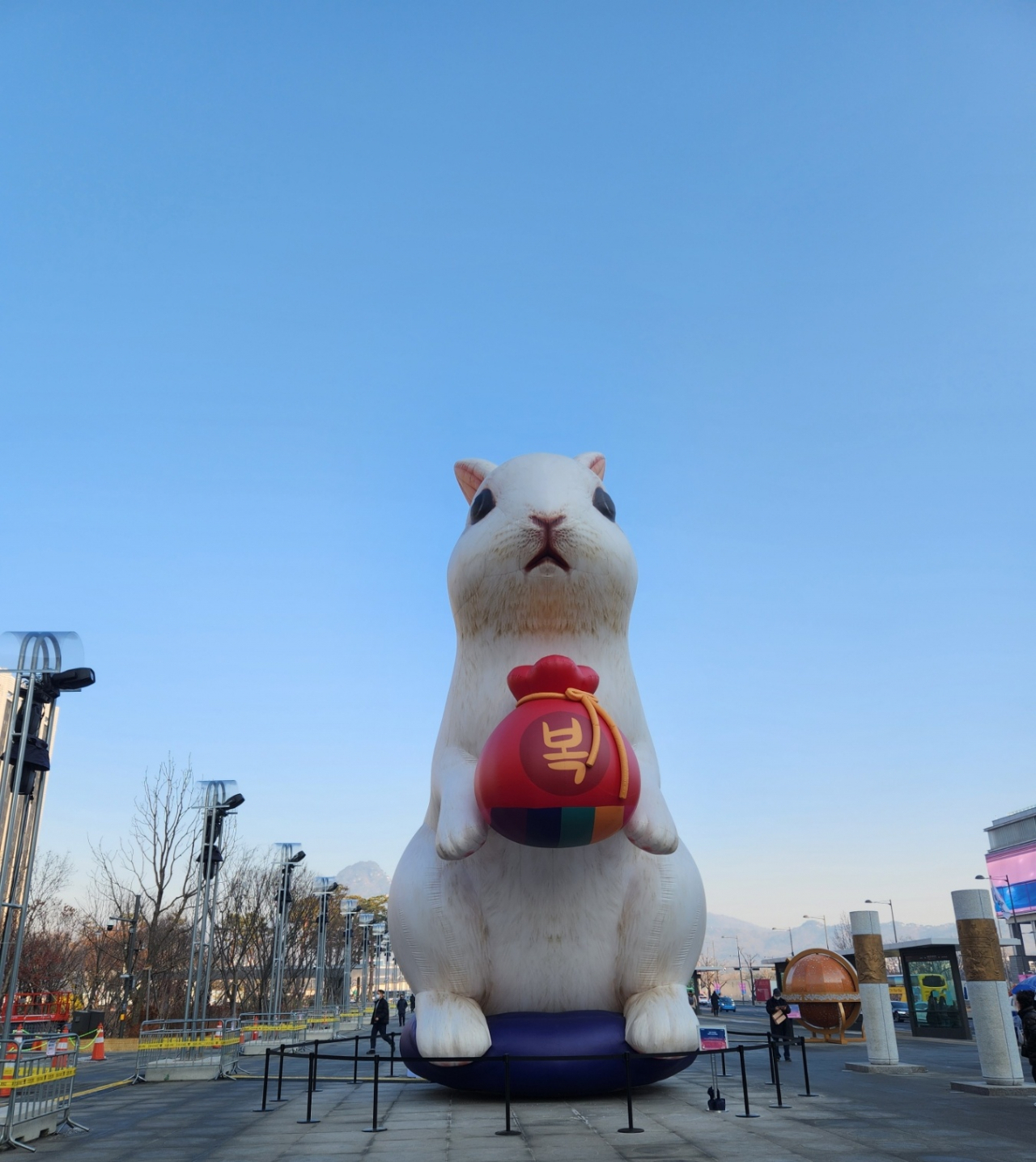
2023 is the Year of the Black Rabbit.
The furry, nimble animal, long associated with fertility and prosperity, has already been appearing at various places across Seoul, embodying Koreans’ wish for the year to be a fruitful one.
Following are some of the places you can find the bunnies.
Giant bunnies
On a recent Tuesday afternoon, foreign tourists took pictures near a 12-meter-tall rabbit sculpture holding a traditional Korean lucky bag, set up at Gwanghwamun Square in downtown Seoul earlier last month.
The rabbit-shaped installation is part of the decorations for the Seoul Lantern Festival, which kicked off on Dec. 19 to celebrate the Year of the Rabbit. The illumination festival typically held each year at the nearby Cheonggye Stream by the Seoul city government and Seoul Tourism Organization was relocated to Gwanghwamun Square this time. The event remains open from Friday through Sunday, 5:30 p.m. to 9 p.m.
“It’s so adorable. Since rabbits have been a popular subject of cartoons, this kind of giant animal statue will entertain many people. I think a lot of Koreans, both new and old generations, are very into the zodiac,” said Balqis Asrof, a tourist in her 20s from Malaysia.
The rabbit is the fourth animal in the Chinese zodiac that is observed by many Asian countries, in which 12 animals -- rat, ox, tiger, rabbit, dragon, snake, horse, sheep, monkey, rooster, dog and pig -- represent different years. People born in the Year of the Rabbit are said to be vigilant, witty and ingenious.
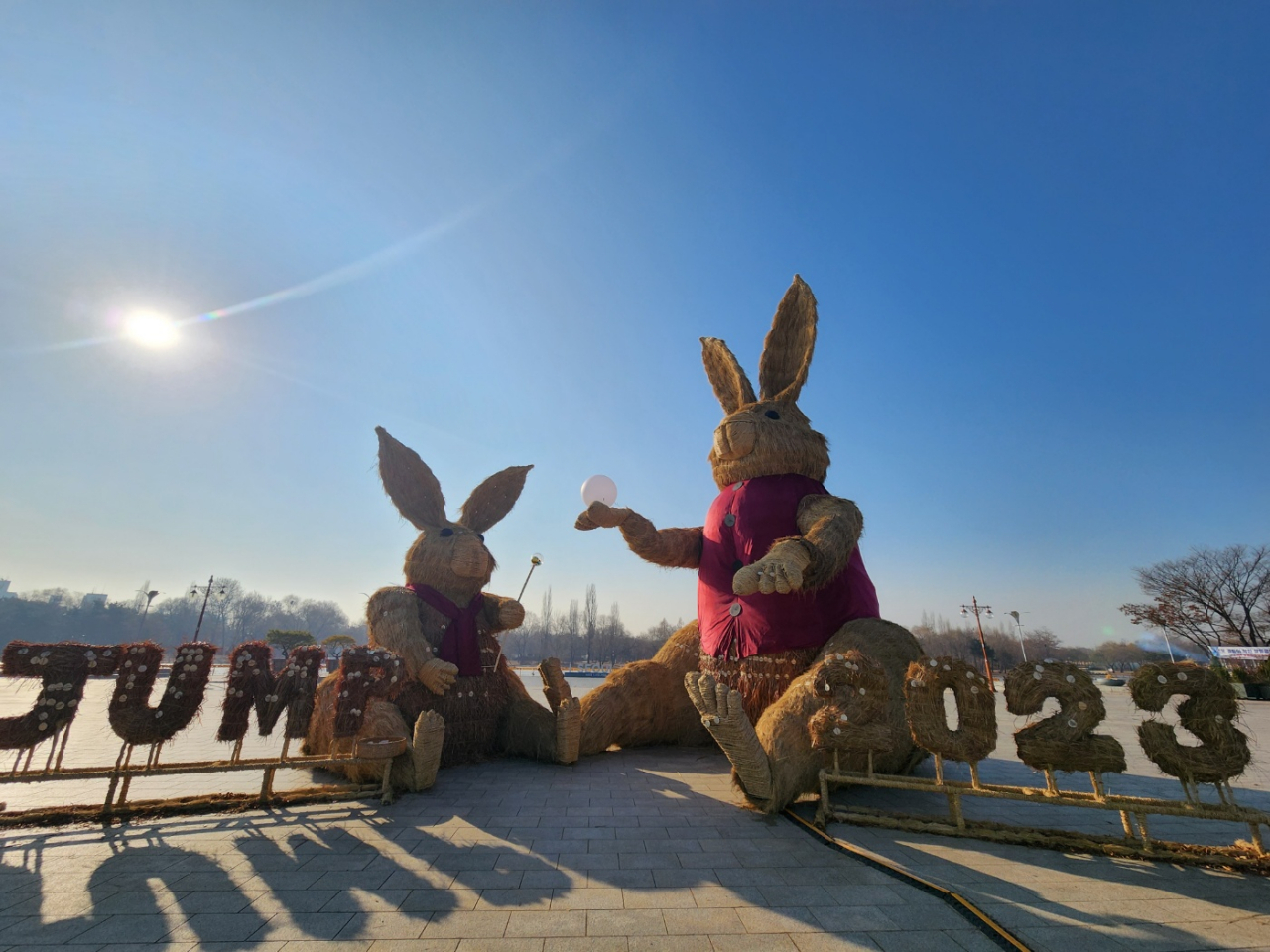
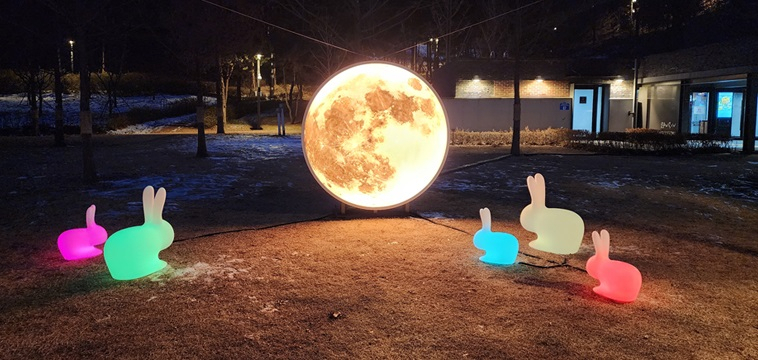
Another public installation at World Cup Park in Mapo-gu, western Seoul, draws attention from passersby for its two rabbits made of silver grass -- a mother bunny and its baby. They are installed at the middle of Pyeonghwa Park, one of the five smaller parks within World Cup Park.
The mother rabbit stands 8 meters tall. Nearly 5 tons of silver grass in total was used to make the two statues, according to Seobu Park Leisure Center responsible for the park’s management and maintenance.
Bang, a 37-year-old housewife living near Susaek Station who was taking a walk around the park on Wednesday morning with her 7-year-old son, said, “I came to explain about the Korean zodiac to my son while looking at the installations. It’s great that he naturally learned the traditional culture.” The rabbit-shaped grass sculptures will be on display until March.
Visitors can also meet illuminated rabbits at another small park near World Cup Stadium, about 200 meters south of Pyeonghwa Park. Light-emitting diodes are applied to rabbit statues surrounding a glowing moon installation from 5 p.m. to 10 p.m. every day.
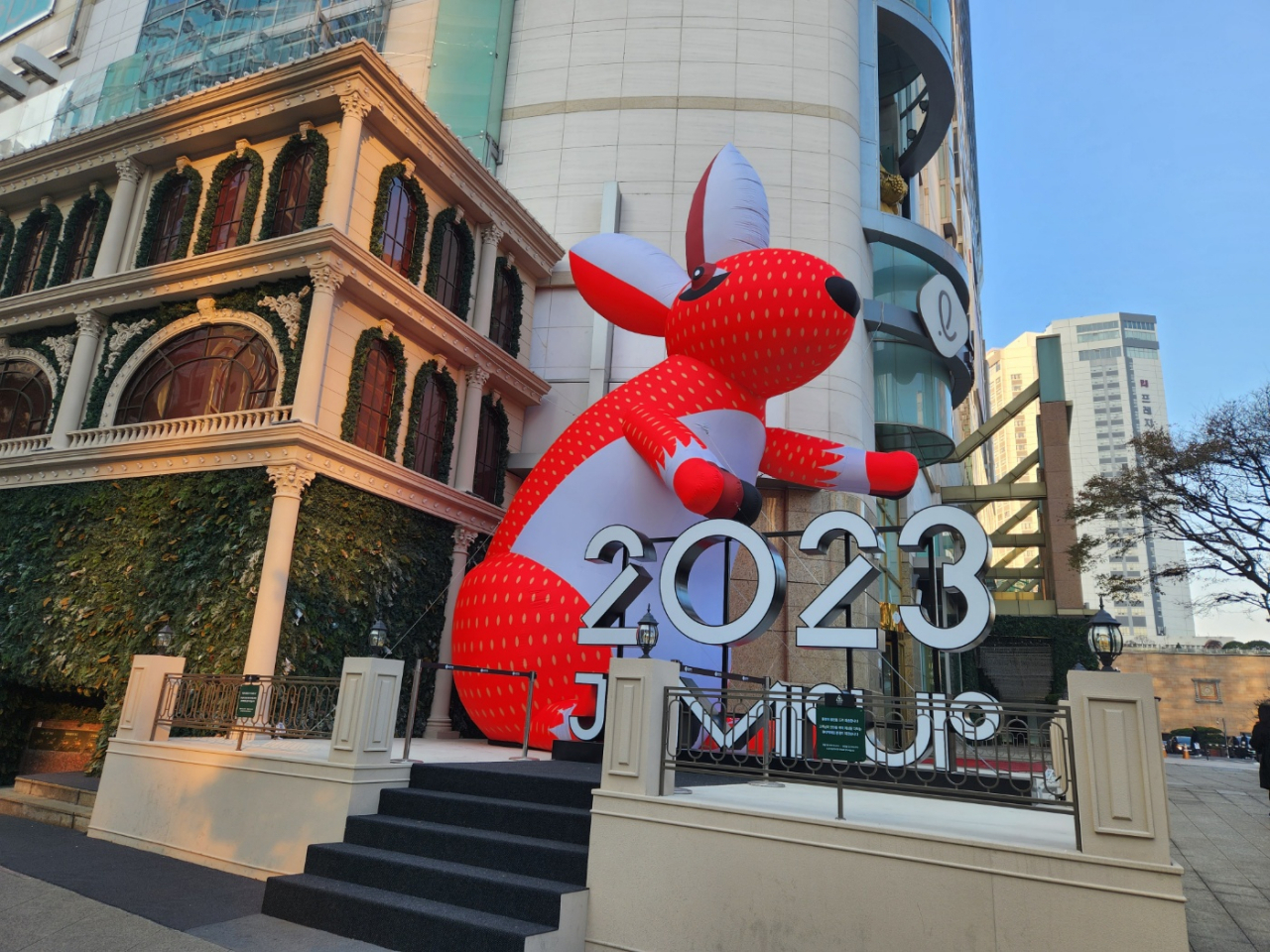
Meanwhile, Lotte Department Store’s flagship branch in the downtown Myeong-dong area of Seoul has installed a 10-meter-tall inflatable rabbit installation standing behind a glowing neon sign that reads: “2023 JUMP UP.”
Rabbits in art
Art exhibitions and events themed around the rabbit also bring a festive vibe to celebrate the start of the new year.
Jang Eun Sun Gallery in Jongno, central Seoul has displayed rabbit-related works of art by contemporary artists, including Kim Pyo-joong and Song Ki-jae, since last week. The special exhibition remains open until Jan. 30.
One of Kim’s paintings, “Carrotopia,” describes a utopia built of carrots, letting rabbits escape from mundane reality.
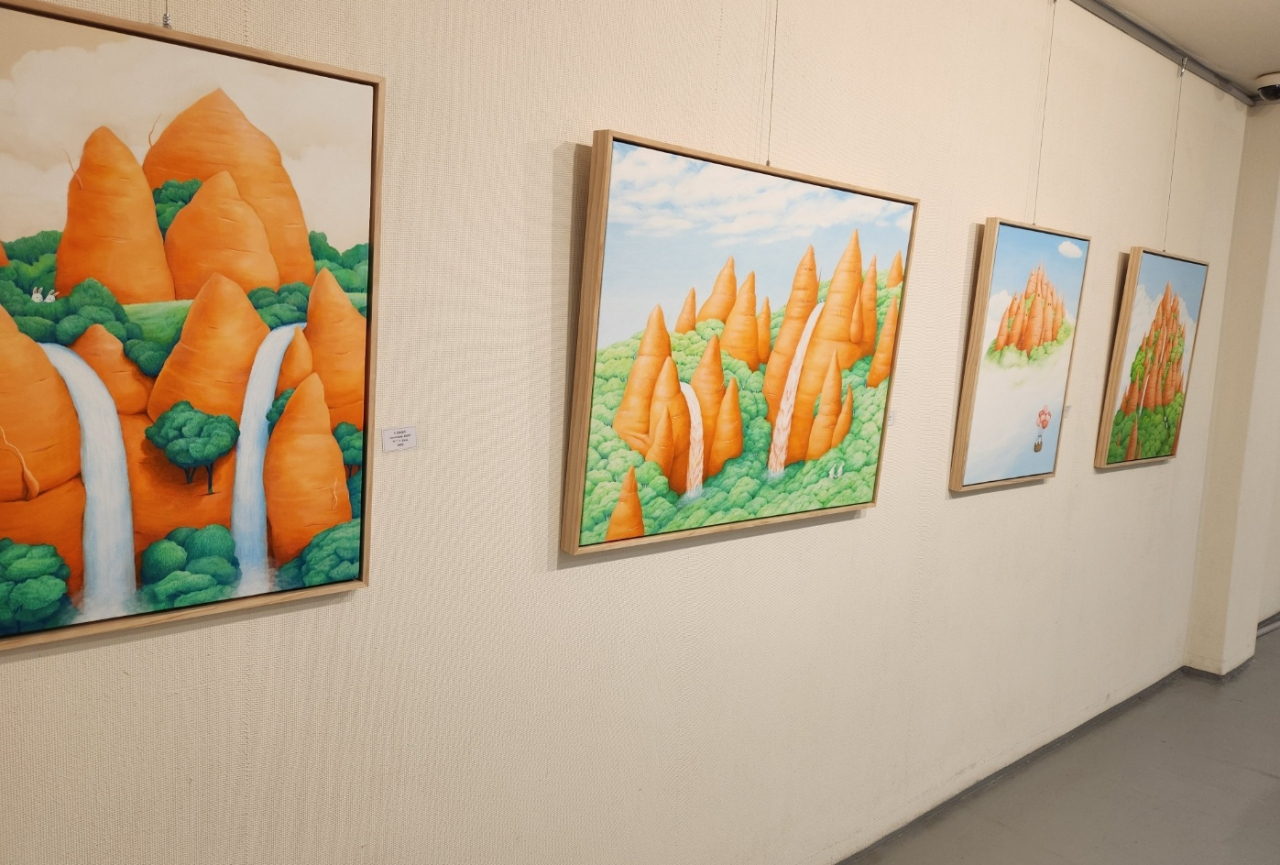
“Rabbits resemble modern Koreans in that they are sensitive to stress. I hope people could get refreshed by thinking of their goals and dreams to escape a hectic life while looking at my drawing,” Kim said.
In Song’s “Wall,” a man in a black suit wearing a bunny mask rides an electric unicycle. The man represents the fate of modern people to be subordinate to society, while describing them as curious beings who wish to learn about their surroundings, according to the artist.
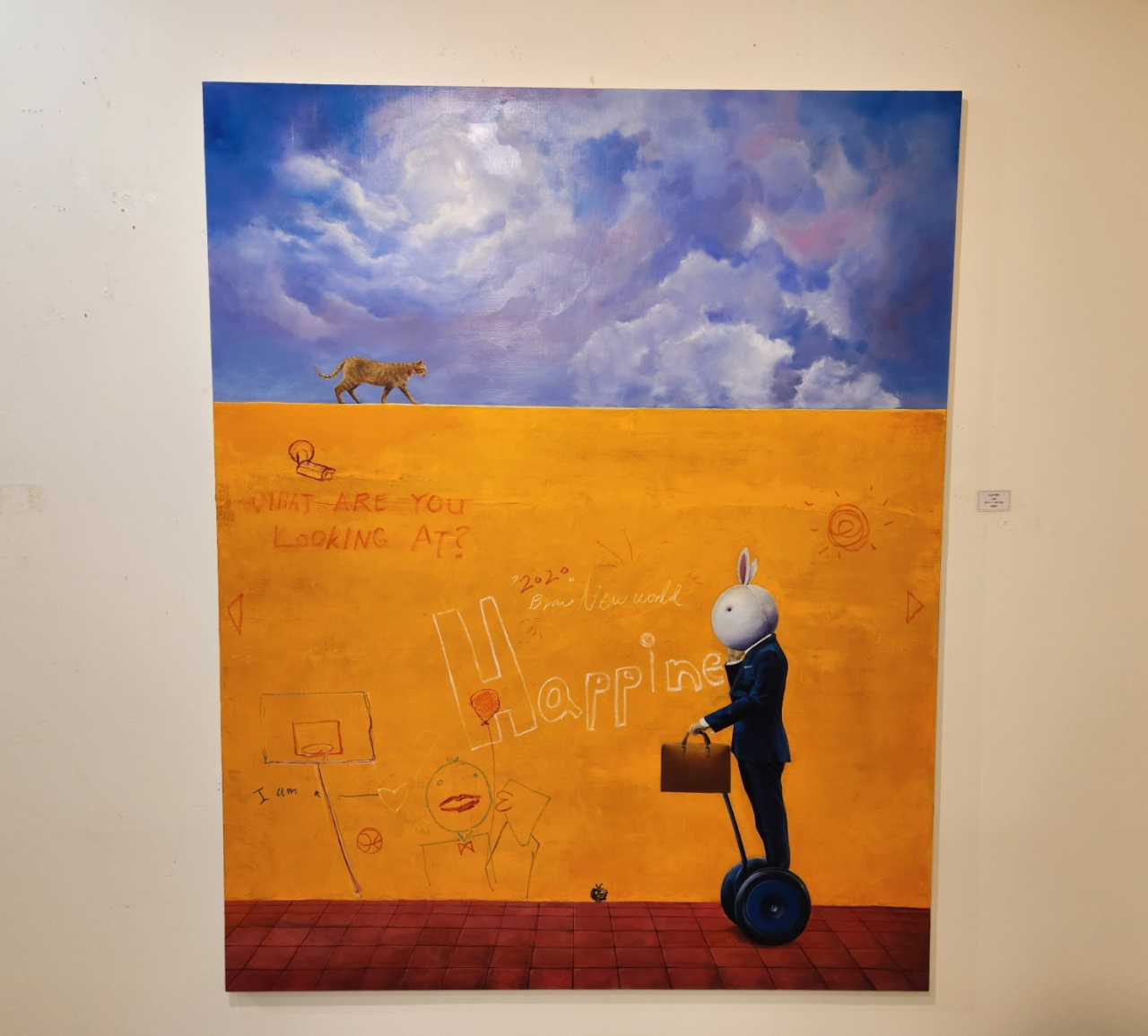
Meanwhile, at the National Museum of Korea in Yongsan, also in Seoul, a total of 10 artifacts and paintings of Korean ancient times featuring the rabbit are on display, allowing visitors to catch a glimpse of how our ancestors viewed the animal back then.
Among them is a rabbit figure made of agalmatolite during the period of the Unified Silla Kingdom between the eighth and ninth centuries. Unearthed from the tomb of Gen. Kim Yu-sin of the Silla Kingdom, the rabbit wearing armor and holding a knife in one hand implies that it was considered an auspicious animal guarding a tomb against evil forces, according to officials.
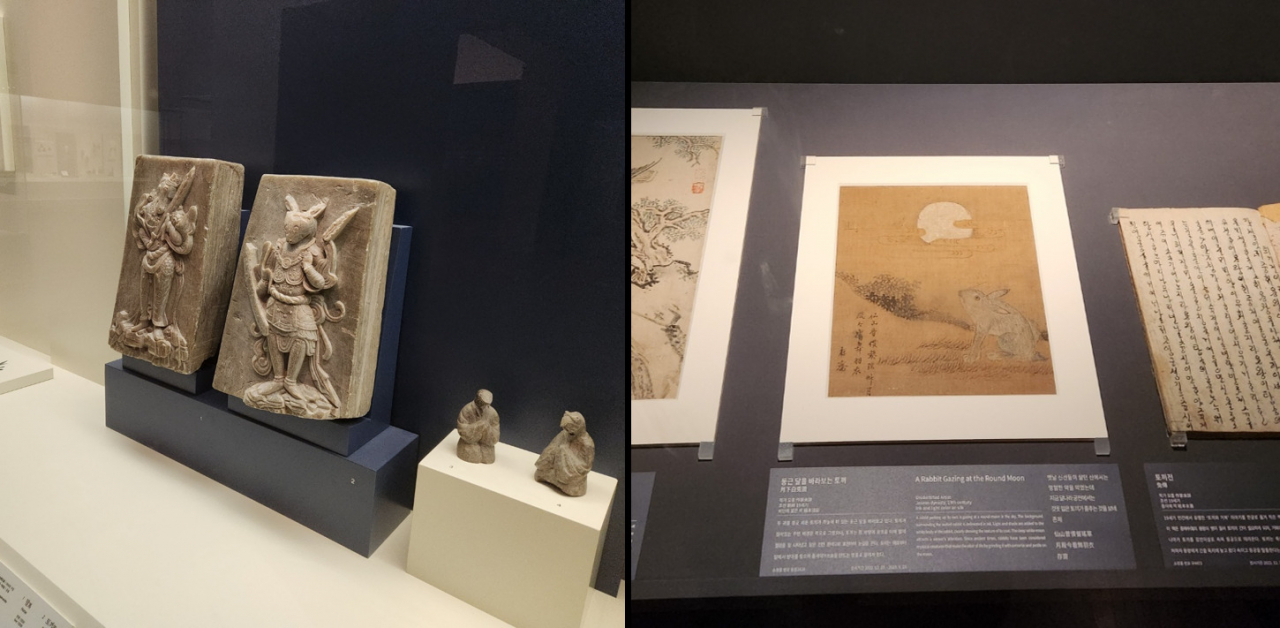
Meanwhile, another painting from the 19th-century Joseon era, “A Rabbit Gazing at the Round Moon,” as the name implies, shows a rabbit gazing at a round moon in the sky with its ears perked up. In ancient times, the rabbit was viewed as a mystical creature that would make the elixir of life in a mortar for the goddess of the moon.



![[Exclusive] Korean military set to ban iPhones over 'security' concerns](http://res.heraldm.com/phpwas/restmb_idxmake.php?idx=644&simg=/content/image/2024/04/23/20240423050599_0.jpg&u=20240423183955)

![[Graphic News] 77% of young Koreans still financially dependent](http://res.heraldm.com/phpwas/restmb_idxmake.php?idx=644&simg=/content/image/2024/04/22/20240422050762_0.gif&u=)



![[Pressure points] Leggings in public: Fashion statement or social faux pas?](http://res.heraldm.com/phpwas/restmb_idxmake.php?idx=644&simg=/content/image/2024/04/23/20240423050669_0.jpg&u=)










